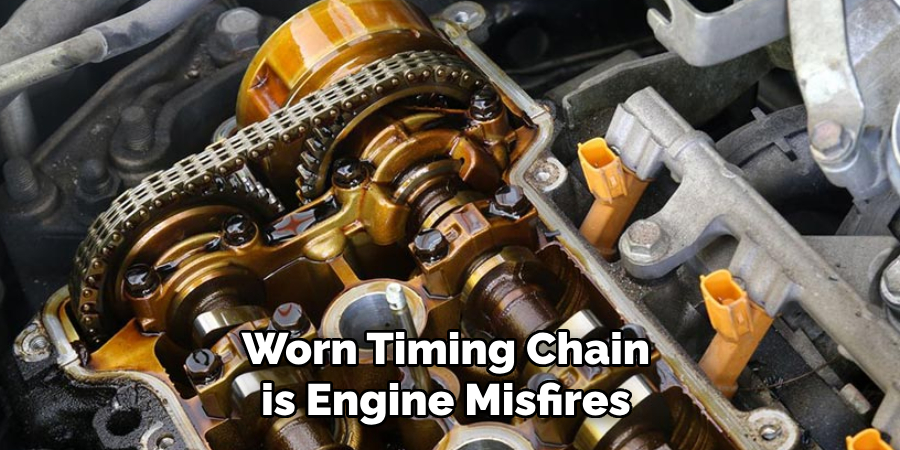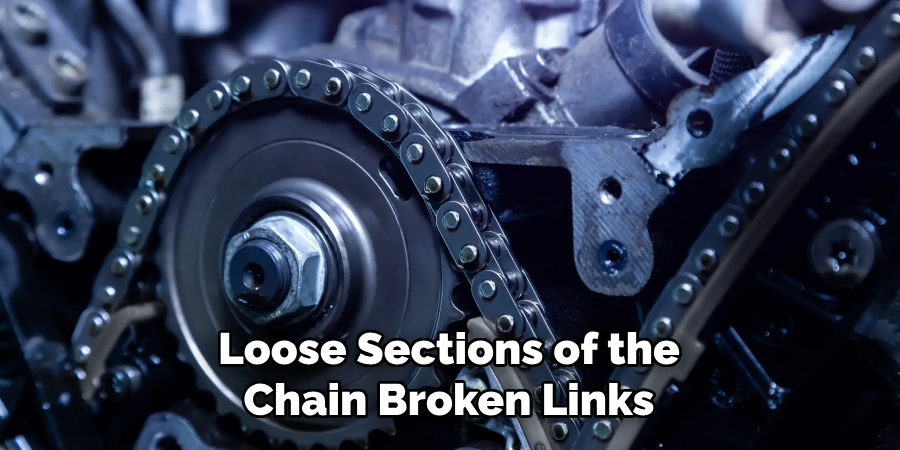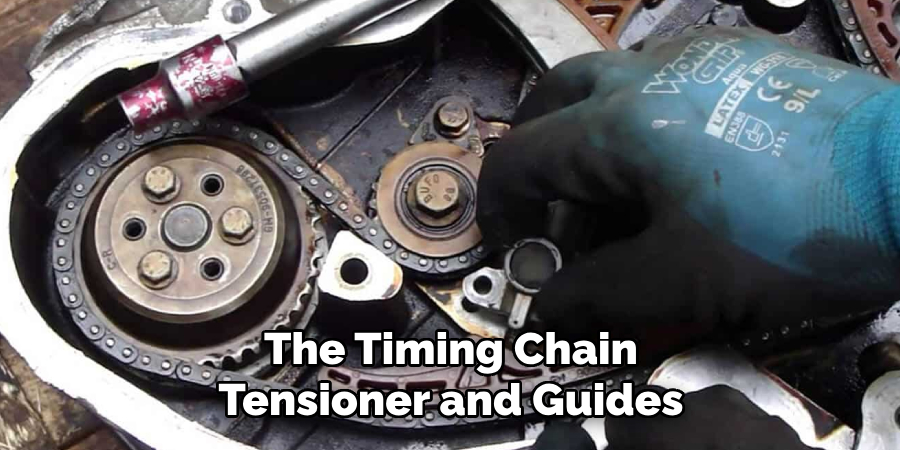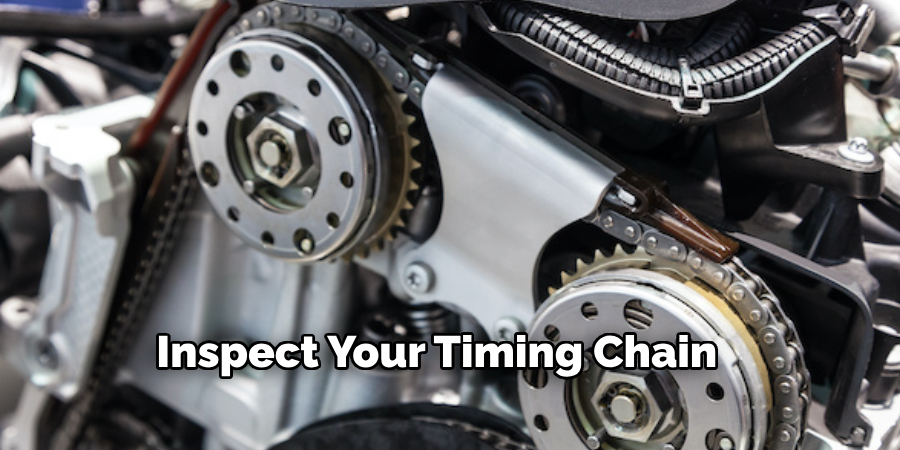Over the years, I’ve seen my fair share of lousy timing chains cause nasty issues like worn valves, failed belts, expensive repairs, and engine failure. As an automotive technician, nothing frustrates me more than a customer bringing their ride in for service only to find the root of their performance or noise issues stems from a neglected timing chain. If left unaddressed, a worn-out timing chain can slowly ruin other systems and components.

However, the good news is that with a bit of education, it’s possible to recognize the early warning signs that a timing chain may need to be replaced soon. In this post, I’ll walk through the top indicators on How to Tell if a Timing Chain is Bad to watch out for so you can determine if your vehicle’s trusty timing chain is still in good shape or showing its age. Let’s get started!
Necessary Items
Before diving into the symptoms of a bad timing chain, it’s essential to know what items are needed to check and replace a timing chain properly. These include:
- Timing Chain Kit: This kit usually includes a timing chain, tensioner, guides, sprockets, and other necessary components for replacement.
- Engine Manual: As with any repair or maintenance procedure, it’s always important to refer to your engine manual for specific instructions and torque specifications.
- Socket Set: A set of sockets in various sizes will be needed to remove the timing chain cover and other engine components.
- Jack and Jack Stands: These are required for lifting and supporting the vehicle while working on the engine.
Now that we have our necessary items ready, let’s move on to the warning signs of a wrong timing chain.
10 Signs on How to Tell if a Timing Chain is Bad
Sign 1: Engine Misfires
One of the most common symptoms of a worn timing chain is engine misfires. A timing chain connects the crankshaft and camshaft, ensuring they are in sync for proper engine operation. As the timing chain wears down, it can cause the valves to open and close at incorrect times, leading to engine misfiring. This can result in a decrease in power and overall performance.
Sign 2: Noisy Engine
If you hear a rattling, clicking, or grinding noise coming from your engine, it could indicate a wrong timing chain. As the chain stretches and wears down, it can create excessive slack, which can cause the chain to slap against other engine components, resulting in a loud and noticeable noise.
Sign 3: Check Engine Light

A failing timing chain can also trigger the check engine light to come on. A worn timing chain can affect other critical systems, such as fuel injection and emissions control. If your check engine light is on, it must be diagnosed and repaired immediately to prevent further damage.
Sign 4: Engine Won’t Start
If the timing chain fails, the engine will not start at all. The valves will not open and close properly without a functioning timing chain. If you experience difficulty starting your vehicle or it won’t start at all, it’s a good idea to check the timing chain.
Sign 5: Decreased Fuel Economy
A worn timing chain can also cause a decrease in fuel economy. An improperly timed engine will consume more fuel than necessary due to inefficient combustion. If you notice a significant reduction in your vehicle’s gas mileage, it could signal a wrong timing chain.
Sign 6: Metal Shavings in Oil
If you regularly check your oil and notice metal shavings or debris in the oil, it could indicate a failing timing chain. As the chain wears down, it can cause metal to chip off and contaminate the engine oil.
Sign 7: Engine Stalling
As mentioned, a bad timing chain can cause misfires and affect engine performance. This could result in the engine stalling or shutting off unexpectedly while driving.
Sign 8: Poor Performance
If you notice a decrease in overall performance, such as sluggish acceleration and a lack of power, it could be due to a faulty timing chain. As the chain wears down, it can throw off the engine’s timing, resulting in poor performance.
Sign 9: Timing Chain Tensioner Failure
The tensioner is responsible for keeping the timing chain tight and in place. If the tensioner fails, it can cause the chain to become loose or jump a tooth on the sprocket, leading to severe engine damage.
Sign 10: Visible Wear on Timing Chain

Lastly, visually inspecting the timing chain may reveal signs of wear and damage. Look for stretched or loose sections of the chain, broken links, or excessive slack. If you notice any of these issues, it’s best to have the timing chain replaced as soon as possible.
The timing chain is a crucial component in your vehicle’s engine, and it’s essential to regularly check for signs of wear and damage. By being aware of the warning signs, you can catch a bad timing chain early on and prevent further damage to your engine. If you notice any of these signs, be sure to have your vehicle inspected by a trusted mechanic as soon as possible.
8 Things to Avoid to Extend the Life of Your Timing Chain
Now that we’ve discussed the warning signs of a bad timing chain let’s go over some tips on how to prolong the lifespan of this critical engine component.
1) Regular Oil Changes
One of the most important things you can do to extend the life of your timing chain is to change your oil regularly. Clean oil helps keep the timing chain lubricated and prevents excessive wear.
2) Use High-Quality Oil and Filters
Not all oils and filters are created equal. Using high-quality products will help keep your engine running smoothly and prevent premature wear on the timing chain.
3) Avoid Overloading Your Vehicle
Carrying excessive weight or towing heavy loads can strain your engine, including the timing chain. Be mindful of your vehicle’s weight limits and avoid overloading it to prevent unnecessary stress on the machine.
4) Avoid Harsh Driving Conditions
Frequent stop-and-go driving, excessive idling, and driving in extreme temperatures can all contribute to premature wear on the timing chain. If possible, avoid these conditions or reduce their impact on your vehicle.
5) Regular Inspections
Regularly inspecting your vehicle by a trusted mechanic can help catch any potential issues, including the wear on the timing chain, before they become more extensive and costly.
6) Replace Worn Tensioners and Guides

The timing chain tensioner and guides also play a critical role in keeping the chain in place. If these components are worn or damaged, they should be replaced to prevent further damage to the timing chain.
7) Follow the Recommended Maintenance Schedule
Every vehicle has a recommended maintenance schedule outlined in the owner’s manual. Following this schedule will help ensure that all critical engine components, including the timing chain, are adequately maintained.
8) Be Cautious of Aftermarket Modifications
Adding aftermarket modifications to your engine, such as a performance camshaft or turbocharger, can put additional strain on the timing chain. Be sure to consult a trusted mechanic before significantly modifying your vehicle.
By following these tips and being aware of the warning signs, you can help extend the life of your timing chain and keep your vehicle running smoothly for years to come. Remember, a well-maintained timing chain is crucial for your engine’s overall health and performance.
So be sure to prioritize its maintenance and address any issues as soon as they arise. Your vehicle will thank you! Watch for these warning signs and take preventative measures to keep your timing chain in top condition.
Frequently Asked Questions
How Often Should I Have My Timing Chain Inspected?

It is recommended to inspect your timing chain at least every 60,000 miles or as specified in your vehicle’s owner’s manual. However, if you notice any warning signs or have concerns about your timing chain, it’s best to have it inspected sooner.
Can I Replace the Timing Chain Myself?
Replacing a timing chain is a complex and delicate process that should only be performed by a skilled mechanic with experience in this type of repair. Attempting to replace the timing chain yourself can lead to further damage and costly repairs.
How Much Does It Cost to Replace a Timing Chain?
The cost of replacing a timing chain can vary depending on the make and model of your vehicle, as well as the complexity of the repair. On average, it can range from $500 to $1500. It’s best to get quotes from several trusted mechanics before deciding on the best option for your vehicle.
Conclusion
In conclusion, you must be aware of signs that your timing chain may go wrong. As we have discussed on how to tell if a timing chain is wrong, there are several key indicators to look out for such as rattling noises, poor engine performance, and issues with starting the vehicle.
Being proactive and addressing these issues early on can save you from potential catastrophic engine failure and costly repairs. Additionally, regular maintenance and inspections by a trusted mechanic can help identify possible problems with your timing chain before they become significant issues.
Remember, it is always better to be safe than sorry when it comes to the health of your vehicle’s engine. So, if you notice any of these warning signs, do not hesitate to take action and get your timing chain checked out. Your car (and wallet) will thank you in the long run. Furthermore, understanding the inner workings of your car’s engine can give you a sense of empowerment and control over its maintenance and care.

About
JeepFixes Team is a skilled author for Jeep Fixes, bringing 6 years of expertise in crafting a wide range of jeep fixes. With a strong background in jeep fixes work, JeepFixes Team’s knowledge spans various types of fixtures, from decorative pieces to functional hardware, blending precision with creativity. His passion for jeep fixes and design has made him a trusted resource in the industry.
Professional Focus:
Expert in Jeep Fixes : JeepFixes Team aesthetic specializes in creating durable and innovative jeep fixes, offering both appeal and functionality. His work reflects a deep understanding of jeep fixes techniques and materials.
Sustainability Advocate : He is dedicated to using sustainable practices, ensuring that every fixture is crafted with eco-friendly methods while maintaining high-quality standards.
In his writing for jeep fixes, JeepFixes Team provides valuable insights into the latest trends, techniques, and practical advice for those passionate about jeep fixes, whether they are professionals or DIY enthusiasts. His focus on combining artistry with engineering helps others discover the true potential of jeep in design.
